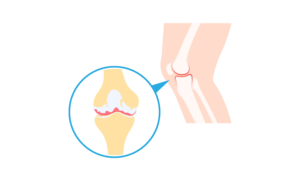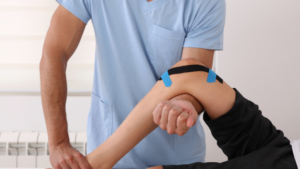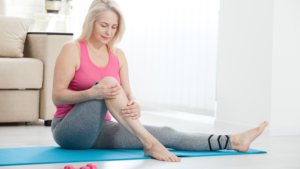What are ligament injuries and how do they affect the
body?
Ligaments are flexible connective tissue that connect bones and cartilage together at the joint (ex. Knee or elbow). Connective tissue is found all over the body and injury to any ligament can be
caused from illness (ex. Rheumatoid arthritis), overuse, or quick and sudden injuries to the area.
There are three different grades of ligament injury. Grade 1 is a slight/mild tear, grade 2 is a moderate tear, and grade 3 is known as a full rupture of the ligament. No matter what grade occurs, this causes the surrounding tissues to over-compensate to allow the body to try move as normally as possible and protect the injured ligament from further damage. This can cause further issues if not assessed as soon as possible, such as muscle stiffness, soreness, and further injury.
The benefits of physiotherapy for ligament injuries

The benefit of physiotherapy for ligament injuries allows the physiotherapist to increase mobility within the injured area, reduce pain from stiffness within the area, as well as the ability to help restabilize the joint to reduce further injury. Furthermore, by improving the state of the ligament, other connective tissues, muscles, and cartilage, can be saved from damage due to safely healing the ligament and reducing over compensation from other tissues around the injury.
The role of the physiotherapist in treating ligament injuries

Coming to a physiotherapist early within the ligament being injured can reduce the chance of permanent damage to the ligament. As previously stated, the physiotherapist can help mobilize, stabilize, and reduce pain within the area. Our physiotherapist at the Unpain Clinic, with over 18 years of experience, has seen his fair share of all types of ligament injuries and can provide a personalized care plan to get you back to your day-to-day life!
How to find the right physiotherapist in Edmonton for ligament injuries
- Narrow down what type of physiotherapist you need. Knowing what type of therapy you need (ex. Pelvic, orthopedic, vestibular, etc.) can help narrow down your search and your healing can start
sooner! Our physiotherapist at the Unpain Clinic has over 18 years of experience and has a wide range of knowledge on all types of injuries and specializes in men’s pelvic health! - Ask friends and family. Those close to you will give their honest opinion about therapists they have seen and give insight if they have had an amazing or poor experience with whom they have seen.
- Look at online reviews. Looking at reviews can give you a sense of the atmosphere (ex. Interactions with admin staff, feeling heard by the physiotherapist, etc.) and figure out general knowledge of the best physiotherapist and why they are popular. Make sure to look and see if the physiotherapist was detailed, thorough, friendly, and accommodating to their clients. These reviews can also help you know the reasons why people have had negative interactions at the clinic.
Tips for managing ligament injuries at home

The R.I.C.E approach is the best approach to handle your injured ligament at home within the early stages to help reduce swelling and inflammation within the area and helps the ligament from being further injured.
- “R” stands for Rest. Reducing the amount of physical activity
that is done at home will help the recovery time for the
ligament and reduce further damage. - “I” stands for Ice. While resting, be sure to ice the area of
injury to help reduce swelling and inflammation to induce
healing within the area. - “C” stands for Compression. Wrapping an elastic bandage or
tensor bandage around the area (not too tight or too loose)
can help reduce swelling again, as well as help stabilize the
joint to reduce further damage when having to move
around. - “E” stands for Elevation. Raising the injured area above
heart level can help reduce swelling and inflammation by
reducing blood flow to the area. Recommended time for
elevation is around 2-3 hours a day but as much as possible
within the first 2 days of the injury.
If advised from a doctor or physiotherapist, doing at home exercises can help increase the healing time of a ligament injury if done correctly and not over-working the ligament before it is ready to reduce further injury.
The importance of seeking treatment for ligament injuries
Please see a doctor as soon as possible after an injury to a ligament to help prevent further and possible permanent damage to the area. By doing this you are protecting the ligaments and reducing further injury to the area as well as reducing further possible complications with the muscles and tendons around the injury as they can over-compensate after an injury or be injured if the injury goes untreated and further movement is being produced.
By receiving treatment from a physiotherapist, they are able to create a personalized treatment plan to help you recover the best way that works for you and in the safest way possible. Our physiotherapist at the Unpain can help!
Author: J. Gies , BKin
Research: J. Gies , BKin
